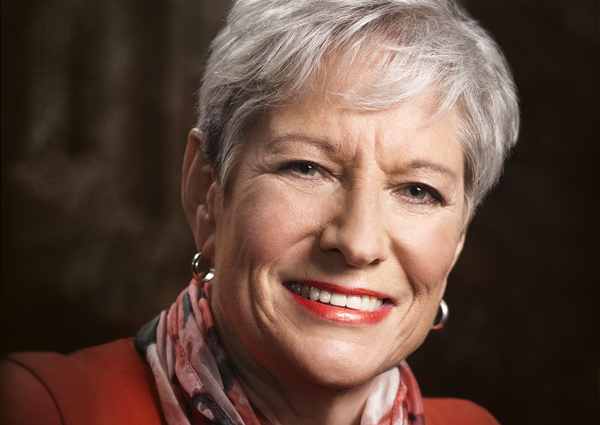Spoilt for choice
Apple, Android, budget, premium, basic, beautiful and stunning. Take your pick. Bill Bennett…
Apple, Android, budget, premium, basic, beautiful and stunning. Take your pick. Bill Bennett helps you shop for a phone for 2018.
Each year phones get faster, more powerful and smarter. They do more and they play an ever more central role in our lives.
Despite phone-maker claims, there were no important breakthroughs in 2017. Instead we saw yet another round of steady, incremental improvement.
It’s been that way for at least the past two years, and there have been no rumours of a great leap forward in 2018 either.
You can expect to see more incremental improvement. The familiar phone format has evolved to a stylish, near featureless glass and metal slab. The main design challenge is to further reduce the buttons and external features.
Any radical change now would lead to a different class of device. The result would not be a phone – at least not as we know it.
No single phone-maker has all the answers, but Apple and Samsung have more answers than their rivals. The two dominate high-end sales in New Zealand. At times they face each other off like two warring religious factions. Both have fanatical followings willing to take up their causes.
Huawei is snapping at their heels. On the evidence of the company’s late-2017 Mate 10 model, it will soon deserve a seat at the top table. Huawei phones are on a par with the best from Samsung.
Google isn’t an active phone brand in New Zealand. That’s a pity. The phones are excellent. Overseas Google continues to push its own innovation agenda; it aims to show what the Android operating system is truly capable of.
Other phone-makers are also doing good work.
Oppo offers something almost as good as the big names at half their prices.
Nokia promises a new way of delivering Android to consumers.
LG is still there somewhere, but again not visible in New Zealand.
Sony continues to make beautiful phones that no Android buyer should dismiss. Again, you have to look hard to find them.
As long as you are willing to spend more than around NZ$700 you will get a good phone. There are no dreadful ones around at the moment.
Cameras and software
Every phone maker will tell you they offer the best camera technology. In truth all the best-known brands offer wonderful photography.
There’s no clear winner and you can’t claim one is top.
It is down to a matter of subjective personal taste over the mix of photography features. If you are good with a camera phone you can take great pictures on them all. All the smart technology in the world won’t turn a terrible photographer into an artist. Yet it can help you take fewer rubbish photos.
A word of caution on phone software. There’s a gulf between Apple’s iOS and Android. If you’ve used one for a while, brace yourself for a jarring experience when you move over. Many, but not all people, find it’s a wrench to move between phone operating systems.
This can also happen when moving between different Android flavours: a loved feature on one Android phone may be missing on another.
Priced to suit
All the main phone brands have worked in the past year to push up prices of their top phone models. Phone prices went up by around seven percent during 2017. Phone makers did this to make a profit, because not all phone makers are in the black.
There is some justification. This year’s phones are at least seven percent better than last year’s models. You won’t get less value if you buy one.
If price is a worry, you don’t need to spend the thick end of NZ$2000 to enjoy all the features and power of a 2017 phone. You can get a great phone and impressive productivity if you spend half that amount.
Spend a quarter of that amount and you’ll still have something worthwhile.
The $500 Huawei nova 2i comes with a 5.9-inch display and a dual-lens camera. This now seems to be standard on every current phone.
Oppo’s R11 phone costs $770. It’s thin, slab-like, has a metal case, and you’ll get most of the features you would find in a more expensive Android phone.
I’ve not tested either model. They are here to give you a taste of what you can get if you don’t want to splurge on an expensive premium phone.
The $1000 Nokia 8 is a respectable performer. Nokia is an old name, but is new to Android phones. The twist is a promise to keep the phone operating system updated. This is something many Android phone-makers fail to deliver on.
Some buyers report the upgrades were not coming as promised, at least on the Spark network. So it may pay to check before buying one.
If you do buy one and the marketing makes mention of regular updates, that then don’t appear, ask for your money back. It would be easy to argue you didn’t get what you paid for.
Nokia has a $100 throwaway phone, the 3310. The design is a fresh take on a 15-year-old device. There’s nothing fancy here. It makes calls and can play Snake. It’s ideal if you buy work phones for careless employees.
Premium selection
Once you spend more than $1000 you are buying more than a phone, because premium phones can do a lot of things you would do with a PC. It is possible to run a business on one.
Among the standout premium phones at the moment is the $1100 Huawei Mate 10. Another $200 buys a plus model with a larger display. Both are great value, although watch again for Android software updates – Huawei is not good at supplying them.
Also in the front rank is the $1600 Samsung Galaxy Note 8. It replaces the model that had a problem with explosions a year earlier, and comes with a stylus which some business users find invaluable.
At the top of the price heap is Apple’s iPhone X. It’s the most advanced phone around, although rival phone makers will argue otherwise. It sells for a nose-bleed price – ranging from $1800 to $2100 depending on the exact model.
All premium models are as much pocket computers as phones. They come with outstanding cameras and offer different takes on artificial intelligence.
While they might seem expensive, $2000 or thereabouts isn’t a lot for something you use daily – especially if they boost your productivity.
That is a bargain.
Bill Bennett is an Auckland-based IT writer and commentator, and a regular contributor to NZBusiness. [email protected]




